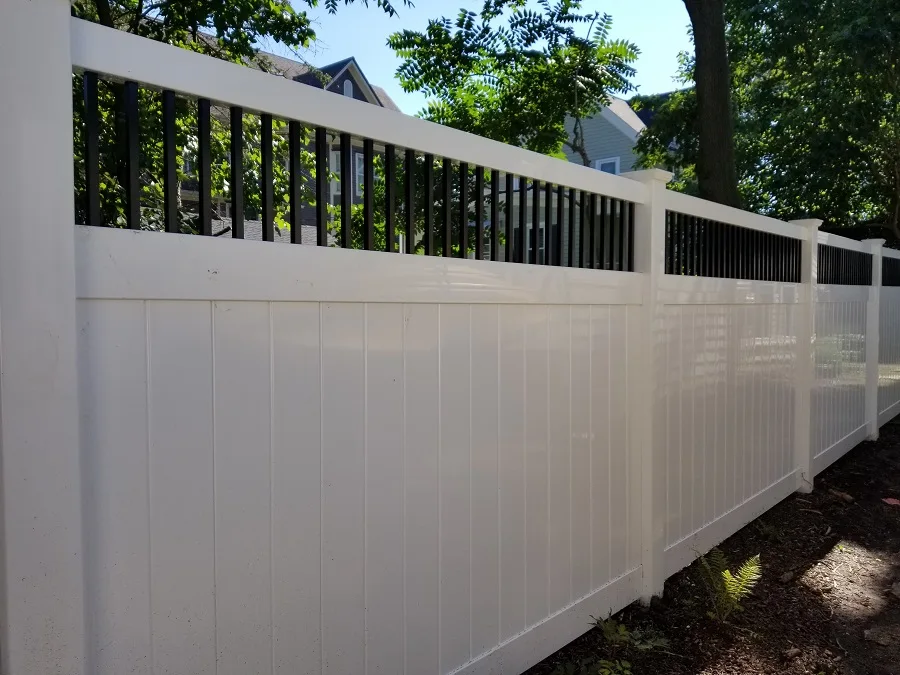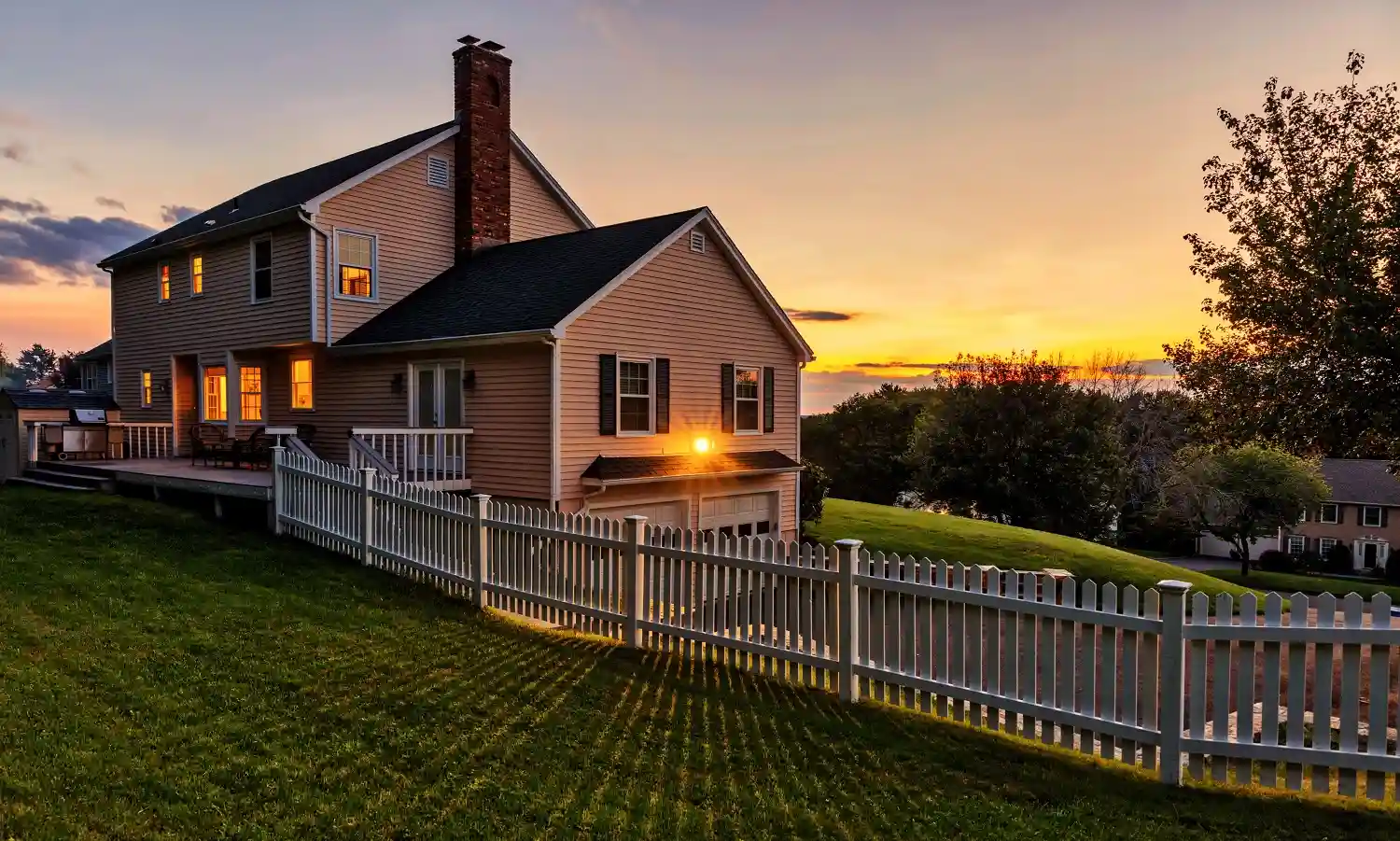Are you looking to install a new fence but feeling overwhelmed by all the choices on the market? Modern vinyl fencing has seen tremendous growth, and vinyl in particular has become a favorite for its blend of practicality and style. Whether your priority is safeguarding your space, enhancing curb appeal, or shaping a cozy outdoor haven, it helps to learn the basics of vinyl fencing before making a decision.
With years of experience in vinyl fence installation, we’ve seen how they’ve reshaped the way homeowners view their property lines. In this guide, we’ll highlight the ins and outs of vinyl fencing — from key advantages and possible disadvantages to a range of design options and how it measures up against more traditional materials. Let’s find out if vinyl fencing fits your property’s vision and needs.
What Is Vinyl Fencing and Why Is It Popular?
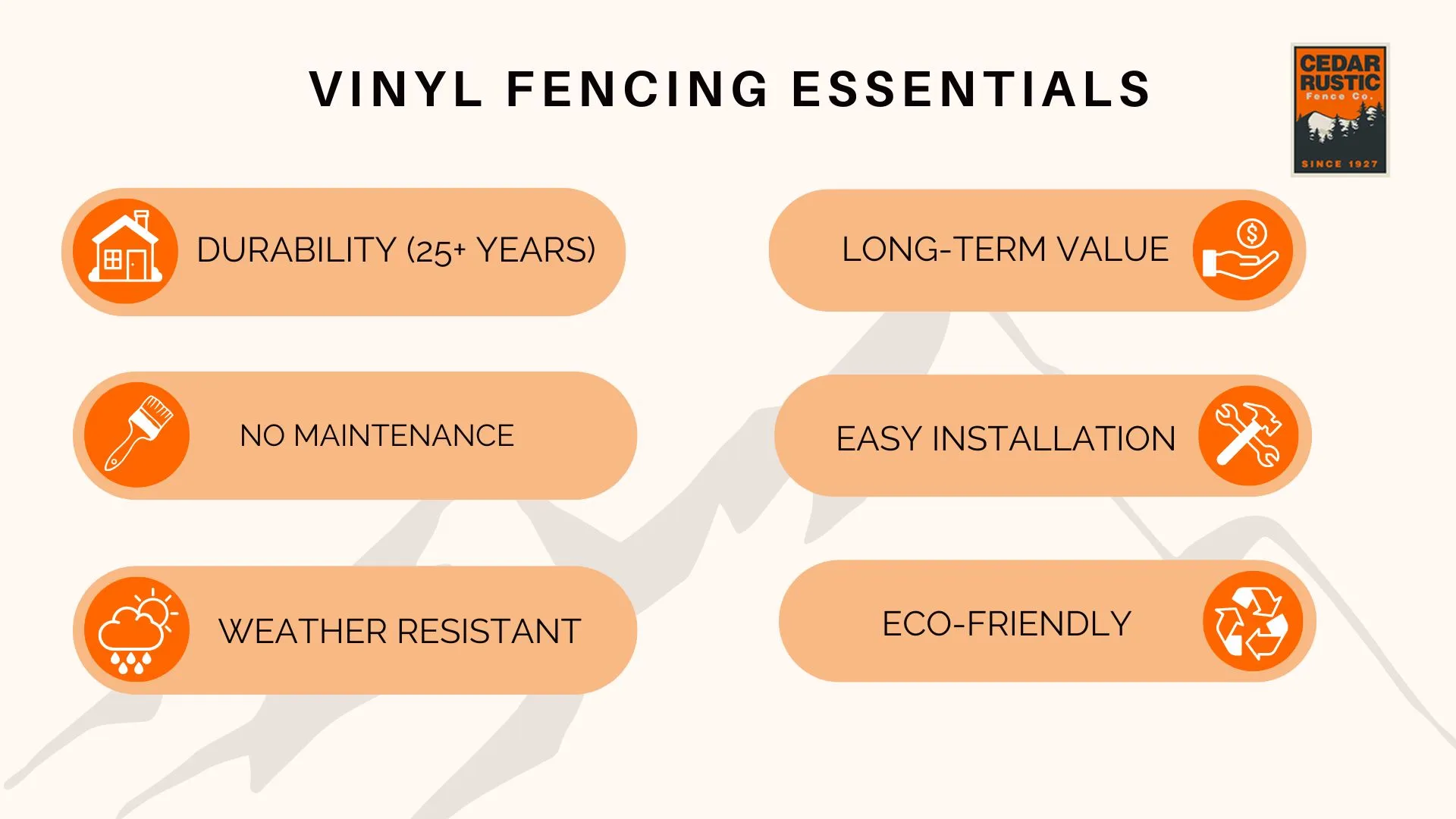
Vinyl fencing is a contemporary approach to property enclosures, built from durable polyvinyl chloride (PVC) that requires very little upkeep. Whether you prefer a simple white style or a fence with a wood grain, vinyl delivers long-lasting performance without constant repairs.
The life expectancy of a vinyl fence typically ranges from 30 to 50 years, and manufacturers often back them with generous warranties. They resist rot, rust, and pest damage better than wood, which means you can avoid frequent maintenance tasks like staining and repainting.
One of vinyl’s biggest selling points is how flexible it can be in terms of style. You'll see vinyl fences in a wide range of colors and finishes — some with wood grain coloring that maintains a smooth surface for easy cleaning. Whatever look you want for your home, there’s probably a vinyl variant that will match your preference.
Advantages of Vinyl Fencing
Advances in vinyl fence manufacturing have tackled many previous concerns. Today’s high-quality vinyl is engineered to handle impacts and challenging weather while saving you money over time. It’s also crafted with UV inhibitors that reduce fading, so your fence will hold its shape and color even on bright, sunny days.
Minimal Maintenance Requirements
Routine painting, sealing, or staining becomes unnecessary with vinyl. A quick wash with mild soap and water is usually all it takes to keep these fences looking their best.
Superior Durability
Vinyl stands up to weather extremes while resisting common problems like rotting, rusting, and bug infestations. It also avoids splitting and splintering, giving you peace of mind about its long-term condition.
Versatile Design Options
Whether your style leans toward a traditional picket design or a more contemporary privacy setup, vinyl fences come in a variety of colors — some even resemble natural wood. This range ensures a good fit for nearly any architectural theme.
Cost-Effective Over Time
While you may pay more at the outset compared to certain types of fencing, vinyl’s resilience and negligible upkeep often make it a smart investment. Many fences hold up for decades with minimal extra expense.
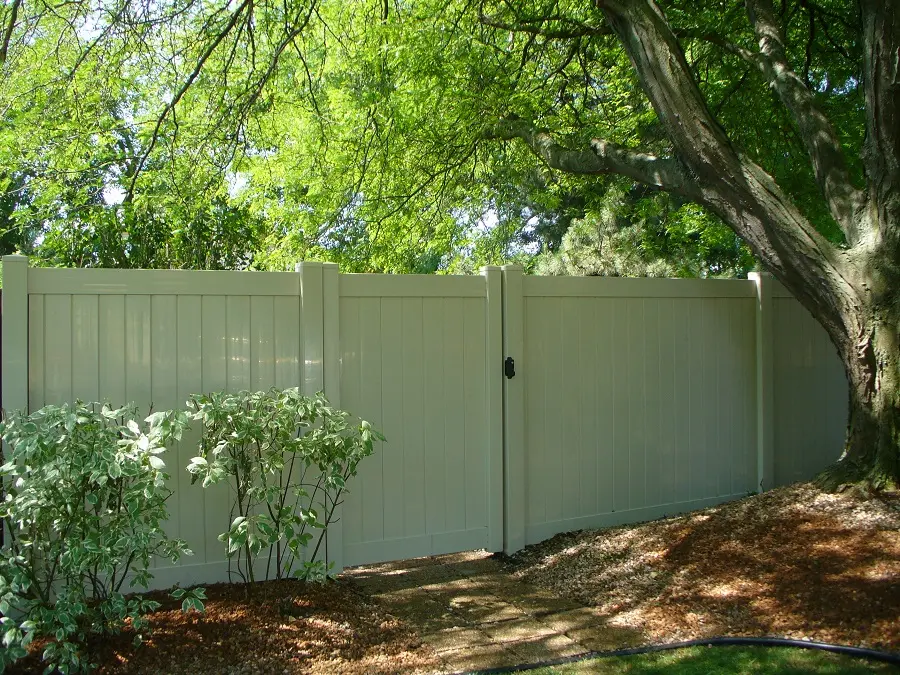
Disadvantages of Vinyl Fencing
It’s important to be aware of vinyl’s potential pitfalls, too:
Higher Initial Cost
While vinyl offers excellent long-term value, the upfront investment is typically higher than traditional wood or chain-link options. Expect to pay 10-40% more initially compared to basic fencing materials.
Limited Repair Options
Replacing individual boards in a wooden fence is fairly simple, but making repairs to vinyl fencing can be more complicated because you may need to remove a rail to replace damaged components. This can complicate and potentially increase repair expenses.
Color Matching Challenges
Over time, subtle shifts in shade happen due to manufacturing batches and natural weathering. If you need to replace a damaged piece years after installation, matching the original color might be trickier than you’d expect.
Types of Vinyl Fences
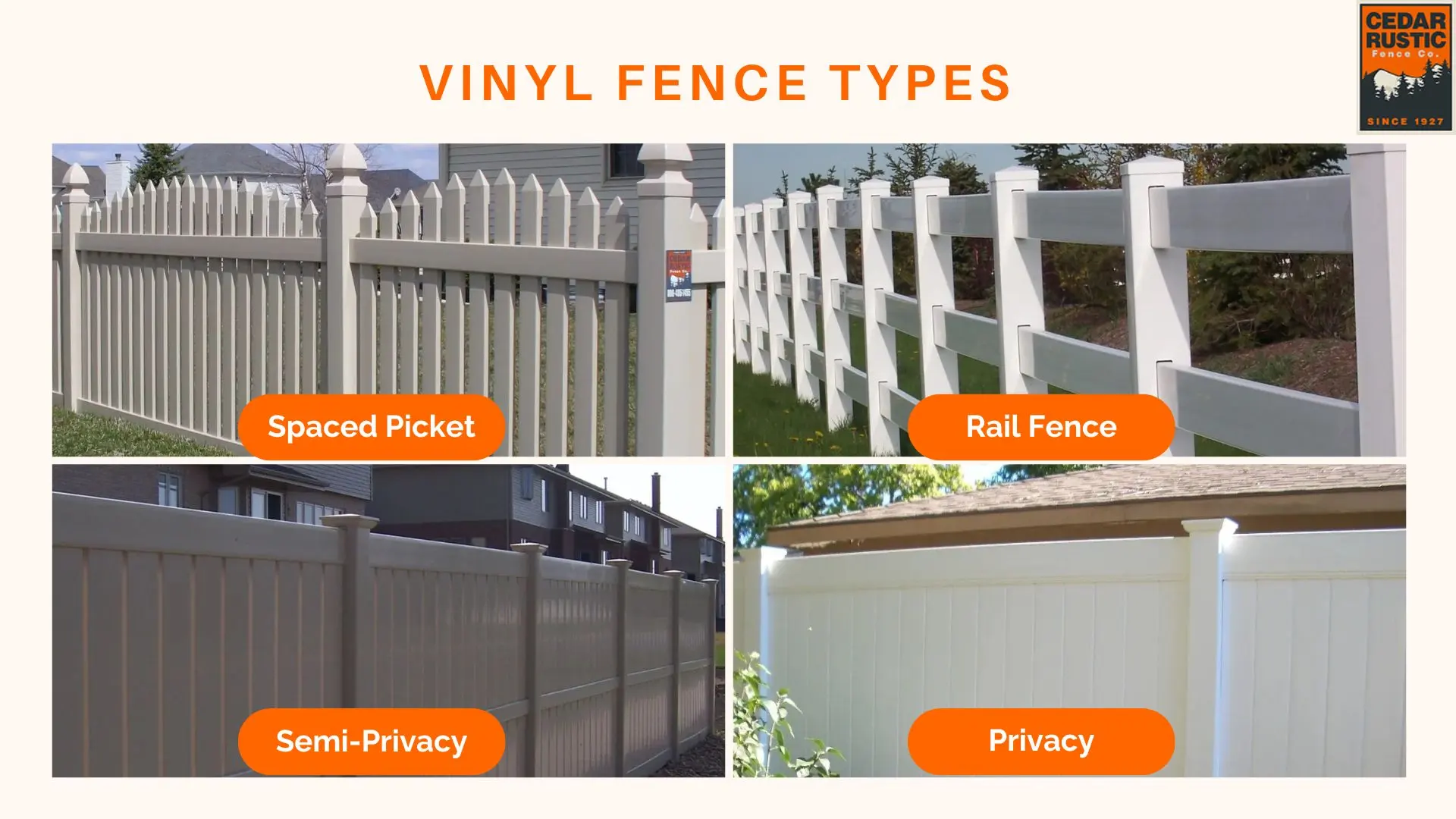
Picking the perfect vinyl fence style is essential for blending your practical aims with the look you want. Whether you’re hoping to shape a secluded backyard escape or elevate your home’s curb presence, getting to know the different vinyl fence styles will guide you toward a choice that perfectly fits.
Spaced Picket Vinyl Fence
Classic and welcoming, spaced picket vinyl fences bring traditional character to your property while clearly marking its edges. Each fence has evenly spaced pickets, giving front yards an open, friendly appearance:
- Adds timeless curb appeal
- Maintains visibility and airflow
- Great for front yards and decorative accents
- Offers a variety of picket designs and spacing
Rail Vinyl Fence
Ranch-style rail fencing has a sleek, minimalist look that suits both wide-open landscapes and more rustic settings. Usually made with two to four horizontal rails, this option creates a sense of openness:
- Defines property lines without obstructing views
- Suited for large lots or acreage
- Uses fewer materials, keeping costs manageable
- Pairs well with both classic and modern exteriors
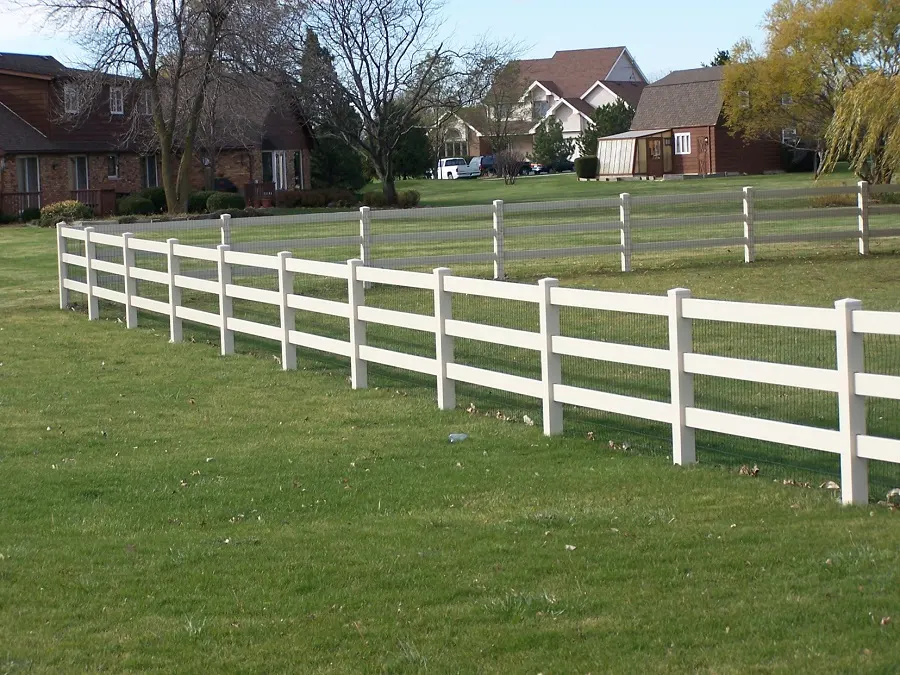
Privacy Vinyl Fence
Solid, full-height panels turn your yard into a private outdoor getaway. This style is ideal for those who want a retreat that feels sheltered from neighbors or passersby:
- Delivers complete outdoor privacy
- Helps block wind and reduce noise
- Comes in different colors or available with decorative toppers
- Creates a neat, cohesive backdrop
Semi-Privacy Vinyl Fence
Semi-privacy fences balance personal space with a bit of openness. These designs feature narrow gaps that let air flow freely while still giving you moderate seclusion:
- Offers partial privacy with a stylish design
- Allows better circulation than full privacy panels
- Eases wind pressure on the fence
- Produces appealing light-and-shadow effects
Every vinyl fence style has unique advantages to fit various preferences and property needs. From the laid-back charm of picket fences to the enclosed feel of privacy panels, vinyl fencing comes in a range of options suited to different tastes and settings. Whether your priority is aesthetics, solitude, or a blend of both, there’s a vinyl fence layout that will enhance your space while standing strong over time.
Vinyl Fencing vs. Alternatives: Which Is Right for You?
Choosing the best material for your fence calls for understanding how each option measures up in areas like durability, upkeep, cost, and overall appeal. Take a look at how vinyl compares to other common fencing types so you can decide with confidence.
Vinyl vs. Wood
Wood fencing offers natural beauty and traditional charm, with cedar being a particularly popular choice for its durability and resistance to decay. If you want to get a full breakdown of what material suits you the best — learn our blog with wood and vinyl differences.
Vinyl vs. Aluminum
Aluminum fences offer a sleek, modern appearance and solid security features. They’re often chosen for pool enclosures or properties with uneven terrain, thanks to their ability to follow slopes. Maintenance is minimal, and the overall look is sophisticated.
Vinyl vs. Chain Link
Chain link fences are known for their budget-friendly pricing and straightforward design. Built from galvanized steel, they’re popular for large spaces and commercial sites. If you’re after a simple way to protect your property and keep children or pets contained, chain link is a practical option.




